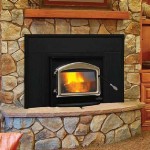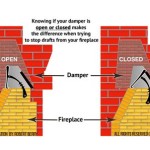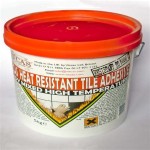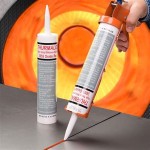Best Way to Clean a Brick Fireplace
Maintaining a brick fireplace involves regular cleaning to remove soot, ash, and other debris that accumulate over time. A clean fireplace not only enhances the aesthetic appeal of the room but also ensures efficient and safe operation. Neglecting this maintenance can lead to stubborn stains that are difficult to remove and potentially pose fire hazards. This article details effective methods for cleaning a brick fireplace, covering different cleaning solutions and techniques for varying levels of soiling.
Preparation and Safety Measures
Before initiating the cleaning process, proper preparation is crucial. The first step is to protect the surrounding area. Place a drop cloth or old newspapers around the fireplace to catch any falling debris or cleaning solution. This safeguards the flooring and furniture from potential stains or damage.
Safety is paramount when dealing with cleaning agents and soot. Wear protective gloves to prevent direct contact with harsh chemicals and to shield the hands from grime. Eye protection, such as safety goggles, is essential to prevent splashes from entering the eyes. A dust mask or respirator is also recommended to avoid inhaling soot particles, which can be harmful to the respiratory system. Proper ventilation is another critical safety consideration. Open windows and doors to ensure adequate airflow, especially when using strong cleaning solutions. This helps to dissipate fumes and maintain a safe working environment.
Gather the necessary cleaning supplies before beginning. These typically include a stiff-bristled brush (a wire brush can be used for heavily soiled areas but proceed with caution to avoid scratching the brick), a vacuum cleaner with a hose attachment, a bucket, sponges, and a selection of cleaning solutions. Having everything readily available streamlines the cleaning process and minimizes interruptions.
Cleaning Solutions for Brick Fireplaces
Choosing the appropriate cleaning solution depends on the degree of soiling and the type of stains present on the brick. Several options are available, ranging from mild to more aggressive solutions, each with its own advantages and disadvantages.
For light cleaning, a mixture of dish soap and warm water can be an effective solution. This gentle cleanser is suitable for removing loose soot and dust. Mix a few drops of dish soap into a bucket of warm water and use a sponge to apply the solution to the brick surface. Scrub gently and rinse with clean water. This method is ideal for regular maintenance and prevents the buildup of heavy grime.
A stronger cleaning solution involves using trisodium phosphate (TSP). TSP is a powerful degreaser and cleaner that effectively removes soot and grease stains. However, it is important to handle TSP with care, as it can be irritating to the skin and eyes. Always wear gloves and eye protection when using TSP. Mix TSP with water according to the manufacturer's instructions and apply the solution to the brick using a sponge or brush. Allow it to sit for a few minutes before scrubbing and rinsing thoroughly with clean water. TSP should be the choice when dealing with persistent stains.
Baking soda paste is a natural and less harsh alternative for cleaning brick fireplaces. Baking soda is a mild abrasive that can help to lift stains without damaging the brick. Mix baking soda with water to form a thick paste and apply it to the stained areas. Let the paste sit for several hours or overnight, then scrub with a brush and rinse with water. Baking soda is very effective on stubborn stains.
For particularly stubborn stains, a solution of muriatic acid can be considered. However, muriatic acid is a highly corrosive substance and should be used with extreme caution. It is crucial to wear protective gear, including gloves, eye protection, and a respirator, when handling muriatic acid. Dilute the acid with water in a well-ventilated area, following the manufacturer's instructions carefully. Apply the solution to the brick using a brush and allow it to sit for a few minutes before scrubbing and rinsing thoroughly with clean water. Muriatic acid can etch or discolor the brick if not used properly, so it is advisable to test it in an inconspicuous area first. This solution should only be used when other cleaning methods are not providing sufficient results.
Step-by-Step Cleaning Process
Once the preparation is complete and the appropriate cleaning solution has been selected, the cleaning process can begin. The following steps provide a detailed guide to effectively clean a brick fireplace.
The surface preparation is key. Begin by removing loose soot and ash from the fireplace using a vacuum cleaner with a hose attachment. Pay close attention to crevices and corners where debris tends to accumulate. This initial vacuuming step prevents the spread of soot during the scrubbing process, ensuring a cleaner and more efficient cleaning.
Apply the selected cleaning solution to the brick surface. Depending on the solution, use a sponge or brush to apply it evenly. For targeted stain removal, focus on the affected areas. Allow the cleaning solution to dwell on the brick for the recommended time period, as specified by the manufacturer or as determined by the severity of the staining. This dwell time allows the cleaning agents to penetrate and loosen the stains, making them easier to remove.
Scrub the brick surface using a stiff-bristled brush. Apply moderate pressure and work in small sections, paying attention to heavily soiled areas. For textured brick, use the brush to reach into crevices and remove embedded dirt. If using a wire brush, exercise caution to avoid scratching the brick surface. Regular scrubbing helps to lift the loosened stains and reveal the clean brick underneath.
Rinse the brick surface thoroughly with clean water. Use a sponge or cloth to wipe away any remaining cleaning solution and loosened dirt. Ensure that all traces of the cleaning solution are removed to prevent residue buildup, which can attract more dirt and potentially damage the brick over time. Repeated rinsing may be necessary to achieve a completely clean surface.
Dry the brick surface with a clean cloth or allow it to air dry. Ensure that the fireplace is completely dry before using it to prevent moisture damage and promote a clean, fresh appearance. Consider using a fan to expedite the drying process, especially in humid environments.
Addressing Stubborn Stains
Some stains may persist despite the initial cleaning efforts. In such instances, additional treatments may be necessary to effectively remove these stubborn stains. Several techniques can be employed to address these challenging situations.
One approach involves creating a poultice using a mixture of baking soda and water. Apply the poultice to the stained area and cover it with plastic wrap. Let the poultice sit for 24 to 48 hours, allowing it to draw out the stain. After the dwell time, remove the plastic wrap and scrape off the poultice. Rinse the area with clean water and allow it to dry. This method is particularly effective for drawing out deeply embedded stains.
Another option is to use a commercial brick cleaner specifically designed for stain removal. Follow the manufacturer's instructions carefully and apply the cleaner to the stained area. Allow it to dwell for the recommended time period before scrubbing and rinsing. Always test the cleaner in an inconspicuous area first to ensure that it does not damage or discolor the brick. Commercial brick cleaners can provide targeted solutions for specific types of stains.
For efflorescence, a white, powdery deposit that forms on the surface of brick due to moisture, use a solution of diluted muriatic acid. Follow the safety precautions outlined earlier, including wearing protective gear and ensuring proper ventilation. Apply the diluted acid to the affected area, allow it to sit for a few minutes, and then scrub with a brush and rinse thoroughly with clean water. Efflorescence can be a persistent issue, so monitor the area and repeat the treatment if necessary.
In some cases, staining may be so severe that it requires professional cleaning services. Professional cleaners have the expertise and equipment to handle difficult stains and can restore the brick fireplace to its original condition. Consider seeking professional assistance for heavily soiled or delicate brick fireplaces.

How To Clean Brick The Home Depot

How To Clean A Fireplace Diy Basics

How To Clean Fireplace Bricks 9 Steps With S Wikihow

How To Clean A Brick Fireplace With Scrubbing Bubbles 2024 Today S Homeowner

How To Clean Fireplace Bricks Simple Practical Beautiful

How To Clean A Brick Fireplace The Family Handyman

How To Clean Brick Fireplaces Mantels Hearths And More My Space

Mortar Wash Brick Fireplace Makeover Dimples And Tangles

How To Clean Fireplace Bricks Quickly And Effectively Lovetoknow

How To Clean Fireplace Bricks
Related Posts








